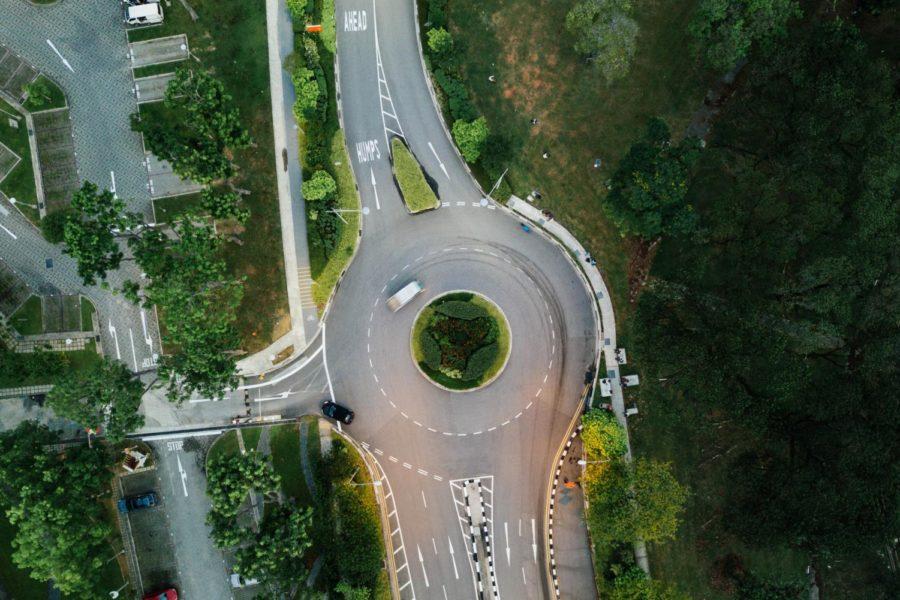Galloway: Roundabouts are better than traffic lights
August 21, 2021
Traffic lights dominate most intersections in our road system, but roundabouts are slowly sneaking into the picture. We usually see them in moderately trafficked, wealthier areas of town. Most of us have seen many lights and roundabouts, but have never stopped to consider the purposes of both types of intersections. I think town officials should at least consider implementing more roundabouts in the coming years. Especially for intersections that have a high number of serious injuries.
Safety is the biggest concern of any road design, and we should be doing everything we can to eliminate as many crashes as possible. Studies have shown that when an intersection with lights is turned into a roundabout the number of collisions is reduced by 37 percent. The average travel speed for a roundabout is between 15 and 20 miles per hour, which means that serious collisions like t-bones and crashes from the rear pretty much don’t exist. The same study mentioned there has been a 75 percent reduction in injury collisions and a 90 percent reduction in fatality collisions.
The cost of building a roundabout compared to traffic lights is about the same. The tipping point occurs when we take a closer look at the cost of overall maintenance. Making sure traffic lights work properly costs between five and ten thousand, which includes repairs and general upkeep. This includes electricity 24 hours per day and personnel on staff to take care malfunctioning lights and replacement of the loop detector sensor.
The same article went on to say that pedestrians only need to cross one direction of traffic at a time as opposed to keeping an eye out for cars coming in a couple directions. The service life of a roundabout lasts around a quarter century and traffic lights last about ten years. Along with being cost effective, roundabouts do have the capacity to handle more traffic and it decreases overall transit time to the destination since drivers only yield and the amount of time at a standstill is almost nil.
Let me give a quick counterargument against the roundabout – because it’s valid and does exist. Hypothetically, an ambulance is trying desperately to make it to a certain location to try and save someone. A roundabout is going to slow the progress tremendously, especially if I’m arguing that most intersections should be turned into roundabouts.
Pedestrians can find roundabouts confusing and it’s not as clear when they should cross as it is with the timer following the human figurine at traffic lights. From a legal perspective, when the minor crashes do occur, it’s often confusing as to whom is at fault with the yielding procedure. (Attached is the article that discusses these issues among a few other problems that occur with roundabouts.)
There would be a short-term loss if we replaced all traffic lights with roundabouts, but it would be very cost effective over the long haul. One solution is to take the intersections with the most accidents and implement roundabouts. The effectiveness of the new intersections can be tested and compared to see if the studies ring true. Making the transition will likely save many lives and allow the government to allocate the extra money to other ventures.

















